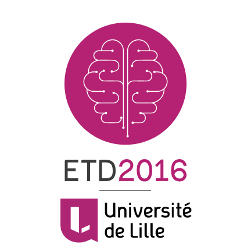Graduate students have taken advantage of the various electronic theses and dissertations systems to enhance their capstone projects with supplemental files since the earliest days of ETDs. In 1997 when Timur Oral was required to submit his digital thesis to the Graduate School at Virginia Tech, “A Contemporary Turkish Coffeehouse Design Based on Historic Traditions,” it was augmented by two QuickTime movies. Along with the text, the PDF of his thesis contains many drawings and colorful pictures, but these now-primitive digital videos convey the atmosphere of a coffeehouse—everything but the coffee aroma.
Recently the discussion of ETDs and their supplementary files has gained momentum. In 2010 Joan Lippincott and Clifford Lynch reported that 43% of Coalition of Networked Information's higher education members permitted students to submit some type of non-text formats as part of an ETD. In 2012 Nancy Stuart presented Canadian practices at the ETD conference in Peru, citing Colin Doroschuk's University of Victoria's ETD entitled “Impossible to Pan.” In 2014 the American agency, Institute for Museum and Library Services awarded $250,000 to address a “national need for preserving and making available supplemental research data and complex digital objects that accompany ETDs.” In Nov. 2015 Ana Pavani reported that the Pontifical Catholic University of Rio de Janeiro started making research data available that was used for ETDs.
But Lippincott and Lynch also noted that lack of information about how many authors include non-textual materials when institutions permit. There have been a few studies that also begin to fill that gap as well as provide information about the data sets accompanying ETD submissions. These include Sarah Shreeves (University of Illinois at Urbana–Champaign) and Steven Van Tuyl (Oregon State University) reporting on the situations at their universities at the 2015 Research Data Access and Preservation Summit.
To this mix can now be added the 504 Virginia Tech ETDs that became available in 2013-2015 and are augmented by files that contain animations, audio files, software code, numerical data, data visualizations, drawings, web pages, videos, and more. This presentation will share data about these augmented ETDs and it will discuss a range of issues based on the evidence in the accompanying data sets. These issues include, but are not limited to, file types, formats, sizes, and content; disciplines, metadata, documentation, availability and accessibility. A variety of questions will also be addressed, including: Are search engines and information vendors enabling researchers to find these data sets? Do these accompanying files belong in data repositories or nested with their ETDs in institutional repositories? How dependent are the supplementary files on the ETD?
This presentation will include audience discussion about what institutions are learning from ETDs with accompanying data and this window onto students' curation practices.
On the author:
Gail McMillan is director of Scholarly Communication (SC) at Virginia Tech's University Libraries. Before joining the faculty at Virginia Tech, McMillan earned two master's degrees (MLS, MA) at the University of Maryland, College Park, and was an Archivist at the Smithsonian Institution.
- Picture

 PDF version
PDF version

